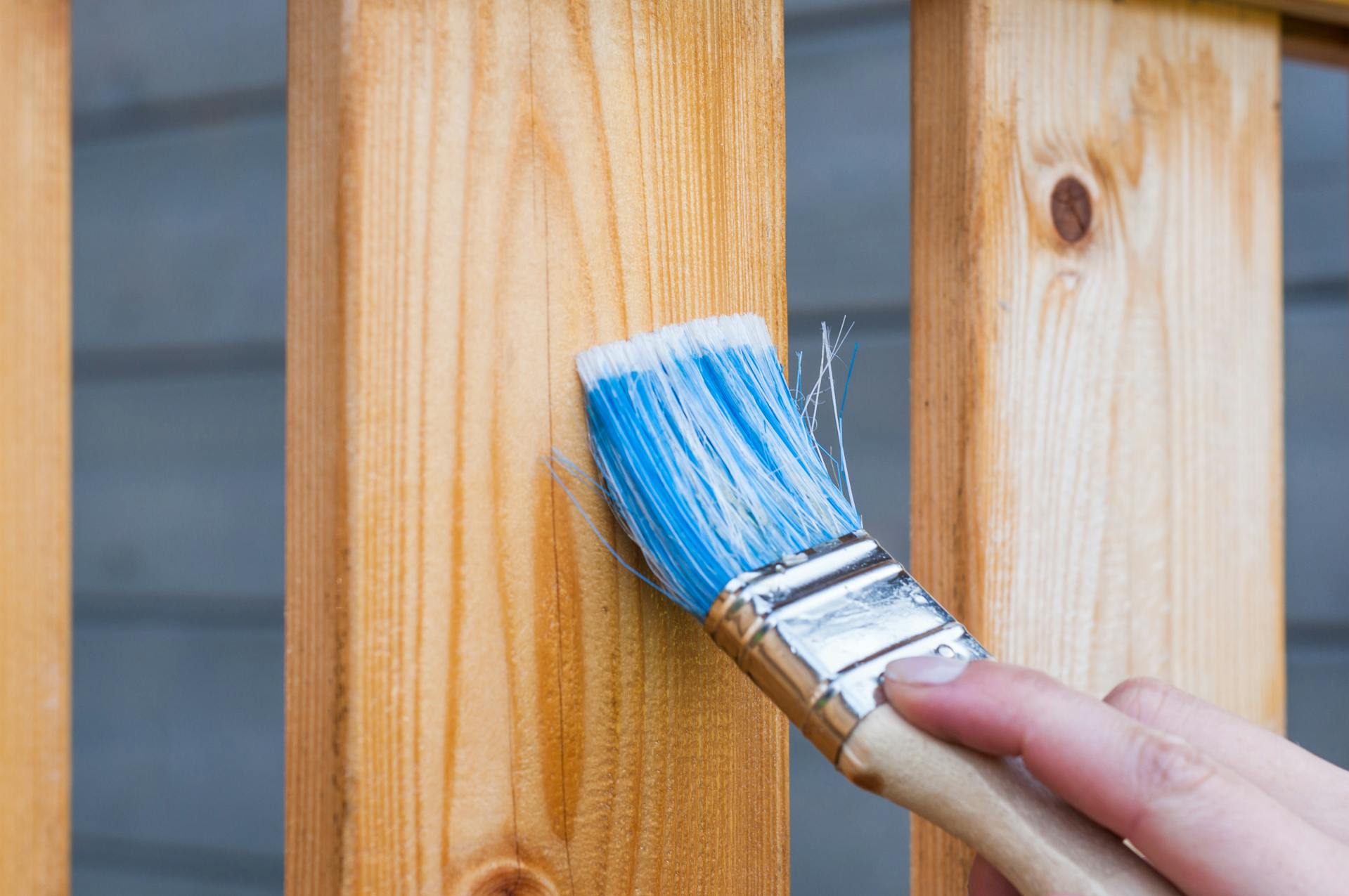Wood fences are a timeless and classic choice for homeowners looking to add charm, privacy, and functionality to their properties. However, to ensure the longevity and aesthetic appeal of a wood fence, proper maintenance is essential.
One crucial aspect of maintenance is deciding whether to seal or paint your wood fence. Both options offer unique benefits and considerations, making it important to understand when each approach is most suitable.
The difference between sealing and painting
Before discussing when to seal or paint a wood fence, it's important to differentiate between the two processes:
- Sealing: Sealing a wood fence involves applying a protective sealant or wood preservative to the surface. This helps to repel water, resist UV damage, prevent rot and decay, and enhance the natural beauty of the wood by highlighting its grain and color variations. Sealants are available in clear formulas or tinted options that can enrich the wood's appearance.
- Painting: Painting a wood fence involves applying a layer of paint, typically with a brush or sprayer, to create a colored and opaque finish. Paint not only adds color and style to the fence but also provides a protective barrier against moisture, sunlight, and environmental elements. Unlike sealants, paint completely covers the wood's natural grain and texture.
Both sealing and painting offer protective benefits, but they differ in terms of appearance, maintenance requirements, and long-term durability. The decision to seal or paint your wood fence depends on various factors, including your aesthetic preferences, maintenance commitment, climate, and the condition of the wood.
When to seal a wood fence
Sealing a wood fence is recommended in the following situations:
- Newly Installed Wood Fence: If you've recently installed a new wood fence, sealing it early is crucial to protect it from moisture, UV rays, and other environmental factors. Fresh wood is more susceptible to damage, making timely sealing essential for long-term durability.
- Natural Wood Look: If you prefer the natural appearance of wood with its grain, knots, and texture visible, a clear or tinted sealant is ideal. Sealants enhance the wood's natural beauty while providing essential protection against weathering.
- Minimal Maintenance: Sealants typically require less maintenance compared to paint. If you're looking for a low-maintenance option that still offers protection, sealing your wood fence is a practical choice.
- Dry Climate: In regions with dry climates or low humidity levels, sealing helps prevent the wood from drying out, cracking, or warping due to moisture loss. It creates a barrier that retains the wood's moisture content and prevents excessive expansion and contraction.
- Pressure-Treated Wood: If your wood fence is made from pressure-treated lumber, sealing it helps enhance the effectiveness of the treatment and extends the fence's lifespan by protecting against decay, insects, and fungal growth.
- Enhancing Color: Tinted sealants can enrich the natural color of the wood, making it appear richer and more vibrant. This is particularly beneficial for woods like cedar or redwood, which have distinctive hues that can be accentuated with the right sealant.
When to paint your wood fence
Painting a wood fence is suitable under the following circumstances:
- Color Consistency: If you want a uniform color and finish across your fence, paint is the best option. Unlike sealants that allow the natural wood characteristics to show through, paint provides a consistent and opaque appearance.
- Aesthetic Preferences: Paint offers a wide range of color choices, allowing you to match your fence to your home's exterior, landscaping, or personal style. It also allows for creative expression, such as using multiple colors or patterns.
- High Moisture Areas: In regions with high humidity, frequent rain, or proximity to water bodies, painting provides an extra layer of moisture protection. Paint creates a sealed barrier that repels water and prevents moisture from penetrating the wood.
- Concealing Imperfections: If your wood fence has imperfections, such as knots, stains, or discoloration, painting can effectively hide these flaws and give the fence a fresh, uniform appearance.
- Longer Durability: While paint may require more frequent maintenance than sealants, it can offer superior durability and protection against harsh weather conditions, fading, and wear over time.
- Enhanced UV Protection: Certain paint formulations include UV inhibitors that help prevent sun damage, such as fading or discoloration, keeping your fence looking vibrant and attractive for longer periods.
Preserve and beautify your wood fence today!
Whether you choose to seal or paint your wood fence, both options offer distinct advantages and considerations. Consider factors such as your aesthetic preferences, climate, maintenance commitment, and the condition of the wood when making your decision. If you prioritize a natural wood look, minimal maintenance, and early protection for new wood, sealing is the way to go. On the other hand, if you seek color consistency, enhanced durability, and the ability to conceal imperfections, painting may be the better choice.
Regular maintenance, including cleaning, resealing, or repainting as needed, will help prolong the life of your wood fence and keep it looking its best for years to come. Consult with a professional if you're unsure about the best approach for your specific fence and environmental conditions. By making an informed choice and investing in proper maintenance, you can enjoy a beautiful, durable, and functional wood fence that enhances your outdoor living space.
Whether you choose sealing or painting, taking proactive steps to protect and maintain your fence is essential. Remember, a well-maintained fence not only adds value to your property but also creates a welcoming and attractive outdoor environment.



